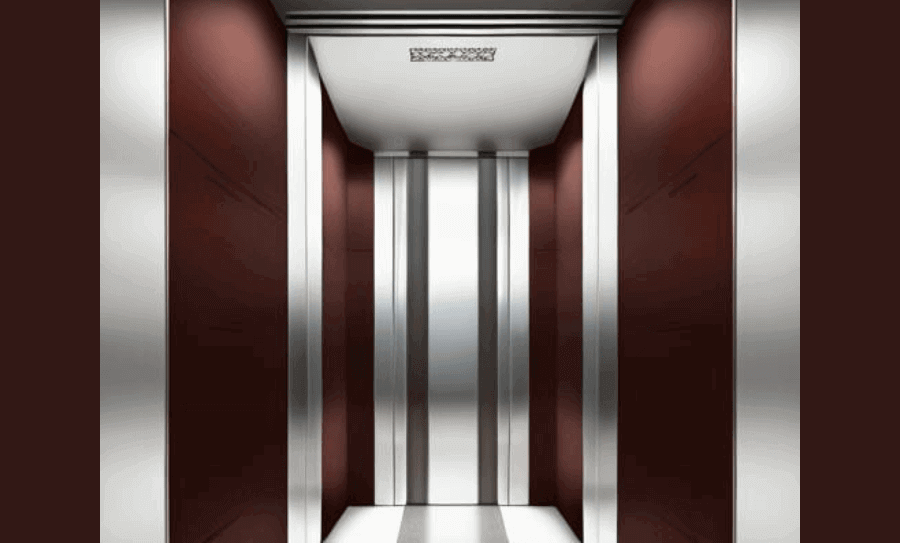A Complete U.S. Guide to Elevator Fire Safety
In modern commercial and residential buildings, elevators are essential—but they can also become high-risk zones during a fire. This raises a critical question for building owners, contractors, and safety inspectors alike: Are elevator doors fire rated? The short answer is yes—most elevator doors in the United States are required to meet specific fire-resistance standards, but not all elevator doors are automatically fire rated. This guide breaks down what it means, what codes apply, how fire ratings are determined, and what to look for during inspections and installations.
Why Fire Rating Matters in Elevators
When a fire breaks out in a building, an elevator shaft can act like a chimney, rapidly spreading smoke and flames to upper floors. Elevator doors are one of the few barriers preventing that vertical spread, and without adequate fire resistance, they, therefore become a dangerous weak point.
According to the National Fire Protection Association (NFPA), over 10,000 structure fires occur annually in high-rise buildings in the U.S., many involving elevator systems. That’s why national codes and local authorities require strict compliance when it comes to fire-rated elevator components.
What Does “Fire Rated” Mean?
A fire-rated door is specifically designed and tested to withstand fire for a certain amount of time, such as 45 minutes, 60 minutes, or 90 minutes, without allowing the spread of flames or excessive heat.
Fire-rated elevator doors are:
- Built with reinforced materials like steel
- Tested for heat resistance, integrity, and insulation
- Labeled and certified by recognized labs (e.g., UL, Intertek)
Important: Fire-rated does not mean fireproof. It means the door can delay fire penetration for a tested amount of time. Thus, giving occupants time to evacuate and first responders time to act.
Are All Elevator Doors Fire Rated?
Not necessarily. But here’s how it breaks down:
1. Hoistway Doors (Exterior Doors You See on Each Floor)
✔ Yes, usually fire rated.
These doors are part of the fire barrier between the elevator shaft and the floor. They must comply with building and fire codes, including fire-resistance ratings, especially in Type I and II constructions (non-combustible).
- Typically rated at 1.5 hours (90 minutes) in commercial buildings
- Labeled as UL 10B or UL 10C compliant
2. Car Doors (The Doors on the Elevator Cab Itself)
✖ Often not fire rated.
Elevator car doors are usually made of metal but may not require a fire rating, since they’re not part of the structural fire barrier. However, some systems use two-speed or telescoping fire-rated doors for added safety.
U.S. Fire Codes That Apply to Elevator Doors
Elevator fire safety in the United States is governed by several major codes:
1. International Building Code (IBC)
- Requires hoistway doors to be fire rated according to floor rating
- Section 3006 mandates elevator lobbies and smoke protection
2. NFPA 80 – Standard for Fire Doors and Other Opening Protectives
- Covers inspection, maintenance, and installation
- Requires annual testing of fire-rated elevator doors
3. ASME A17.1 / CSA B44 – Safety Code for Elevators and Escalators
- Specifies mechanical and safety requirements
- Requires emergency operation and fire service modes
4. UL 10B / UL 10C
- UL 10B: Fire tests for door assemblies
- UL 10C: Positive pressure fire testing (required in most U.S. states)
Tip: Building owners and contractors must verify that both elevator doors and the frames are listed and labeled with the correct fire rating.
How to Identify a Fire-Rated Elevator Door
Look for the certification label or nameplate, usually riveted to the edge of the hoistway door. This label includes:
- Manufacturer name
- Fire-resistance rating (e.g., 90 min)
- UL or Intertek mark
- Serial or model number
If the label is missing or illegible, the door is not considered fire rated in code compliance reviews.
What Happens During a Fire?
Contrary to what many believe, you should never use an elevator during a fire. Elevators can:
- Get stuck between floors
- Draw smoke into the shaft
- Fail due to power outages
Instead, buildings use elevator recall systems, where:
- The elevator automatically returns to a designated floor
- Doors stay open and disabled persons evacuate via fire-rated areas or refuge zones
- Also, firefighters take manual control of the elevator
Fire-rated doors play a crucial role here: They seal off elevator shafts from the rest of the building to contain fire and smoke.
Required Fire Ratings by Building Type
| Building Use | Elevator Door Fire Rating |
|---|---|
| High-rise office | 90 minutes |
| Hospital | 90 minutes (some may have 3-hour doors at firewalls) |
| Residential (5+ stories) | 60–90 minutes |
| Parking structures | Often exempt unless directly connected to a building |
So, always check with your local AHJ (Authority Having Jurisdiction) for exact requirements.
Are Elevator Lobbies Required to Be Fire Rated?
Yes, in many jurisdictions. According to IBC Section 3006:
- Elevator lobbies must have smoke-resistant partitions
- In many cases, fire-rated doors are required to separate the lobby from corridors or rooms
This ensures that even if the elevator shaft fails, the fire is contained from spreading rapidly to adjacent spaces.
Inspection and Maintenance Requirements
Fire-rated elevator doors require:
- Annual inspections by certified fire door inspectors (NFPA 80)
- Documentation of all labels, ratings, and repairs
- Functional testing of the door’s automatic closing mechanism and integrity
So, failure to comply can result in:
- Insurance claim denial
- Code violations
- Unsafe conditions during emergencies
Common Misconceptions
❌ “All metal elevator doors are fire-rated.”
Not true. Only certified doors with visible fire labels are code compliant.
❌ “Fire-rated doors don’t need inspection.”
All fire doors, including elevator hoistway doors, require annual inspection under NFPA 80.
❌ “Car doors also need to be rated.”
Typically, only hoistway doors must be rated. Car doors are not part of the building’s fire separation system unless specified.
Final Verdict:
Yes, in most commercial and residential buildings in the U.S., elevator hoistway doors are fire rated by code, typically for 1.5 hours (90 minutes). However, not all elevator doors are fire rated by default—especially if improperly installed, missing labels, or in older structures.
If you’re unsure whether the elevator doors in your building are fire rated:
- Look for a UL or Intertek label
- Verify the fire rating duration
- Consult a licensed inspector or fire marshal
- In last, ensure compliance with NFPA 80, IBC, and local code requirements
Quick Checklist: How to Ensure Elevator Fire Safety
In conclusion,
✅ Look for certification labels on hoistway doors
✅ Confirm UL 10C or equivalent fire rating
✅ Schedule annual inspections (per NFPA 80)
✅ Ensure proper elevator recall system is installed
✅ Keep lobbies and shafts sealed and compliant
Visit our website for more. If you want more, click here: “Get Quick Answer“.


